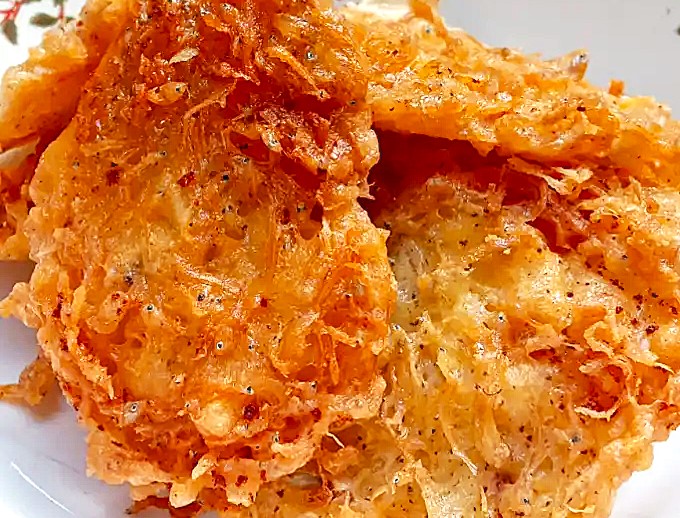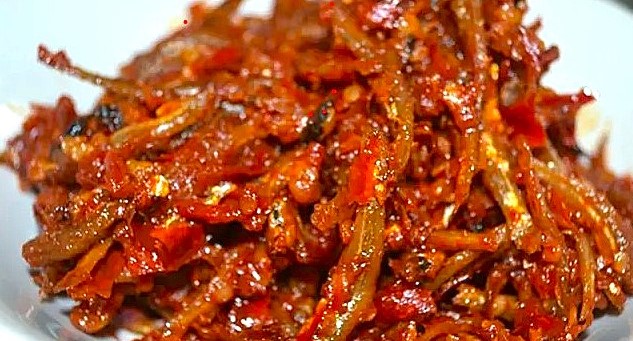
“Ikan Teri (Anchovies) In the Karimunjawa, A Story of Life in the Calm Sea”
On a quiet morning on Karimunjawa Island, the atmosphere begins to awaken with the sun's soft light greeting the sky. However, for most of the residents here, the new day does not start with an ordinary feeling. Since early morning, they have been preparing to go to sea, not to catch big fish, but small fish that have a big role in their lives, namely anchovies.
Karimunjawa Island, famous for its exotic beaches and enchanting coral reefs, also has an equally interesting story about anchovies. Although small, this fish has become a major commodity that supports the economy of Karimunjawa residents, even more than just food.
Early in the morning, before the sun rises on the eastern horizon, the fishermen have prepared their nets. While waiting for the traditional motorized boat called “Jukung” which will take them to the middle of the sea, they chat lightly, share stories, and encourage each other. The people of Karimunjawa are indeed known for their spirit of togetherness and hard work. For them, going to sea is not just about fishing, but also an inseparable part of life.
"Karimunjawa is not just about beaches and tourism, but also about localness and anchovies that are abundant around the island," said Bapak Priyo, a fisherman who also works as a teacher. Like most other Karimunjawa residents, Priyo makes fishing a side job that can provide additional income.
From The Sea to The Market, A Small but Valuable Story
The man who is more than half a century old is always enthusiastic about starting his motorbike engine to penetrate the early morning fog towards the edge of Nyamplungan Beach. On the beach, which is located about 100 meters from his house, Priyo anchors the Jukung that accompanies him along the sea around Karimunjawa Island to catch anchovies.
After the Jukung sailed away from the shore, Bapak Priyo started to turn on the large spotlight to see more clearly the movement of the anchovy shoals. The instinct that had been honed led him towards a point where the anchovy shoals gathered, Bapak Priyo then turned off his Jukung engine from a radius of 50 meters. As soon as he approached the shoals of anchovies, the prepared lifting net was deftly inserted into the water's surface.
Once the lifting net is pulled up, the glistening of fresh anchovies under the spotlight will be very satisfying.
It didn't take long for them to fill the Jukung with quite a lot of anchovies. In a short time, Priyo and some of his neighbors who were also out at sea would soon come ashore. They never immediately took a lot of anchovies from the sea, if the amount was enough to sell for today, they would immediately come ashore
The anchovies caught are not only sold fresh but also processed into various processed products. One of the superior products is salted anchovies, which are sold to local markets and even sent to major cities in Indonesia. Not infrequently, visitors who come to travel to Karimunjawa also bring home souvenirs in the form of salted anchovies, which are mementos from this island rich in stories.
Earning Fortune in the Middle of the Sea
Anchovies are not always abundant. During the dry season, anchovy populations are seen in abundance in the waters around Karimunjawa Island. The harvest season for anchovies will arrive around April to the end of September.
Anchovies, although considered small, actually have great economic value. For many Karimunjawa residents, going to sea to find anchovies is not only about earning extra income but also about continuing a tradition that has been passed down from generation to generation. Although many of them work as civil servants or traders, going to sea is their way to survive and maintain the balance of life on this small island.
For Bapak Bayu, an anchovy trader who has lived in Karimunjawa for decades, catching anchovies has become part of the rhythm of life.
"These anchovies are not just small fish, but also a commodity that supports our lives here. Without anchovies, our lives in Karimunjawa would not be the same," he said while smiling.
Simplicity that Brings Meaning
From the story of fishermen who leave early in the morning to anchovies sold in markets, everything revolves in a simple but meaningful cycle. Anchovies are silent witnesses to how Karimunjawa residents survive, adapt, and create prosperity from the unpredictable sea.
Karimunjawa is indeed known for its natural beauty, but there is one story that is often forgotten, namely the story of anchovies and how these small fish brought big changes to the lives of the people on this island.
Over time, visitors who come to enjoy the natural beauty of Karimunjawa not only return home with beautiful memories of charming and clean beaches. But also with memories of how a small community managed to build a sustainable life, starting from the sea and the anchovies that faithfully accompany them.

“The Miracle of Anchovies: Traditional Cuisine of Karimunjawa Island”
On Karimunjawa Island, behind the beauty of its beaches and natural charm, another wealth is no less interesting to explore—namely the deliciousness of traditional cuisine made from anchovies. Although small, anchovies on this island play a big role in everyday life, especially in the kitchens of housewives who skillfully process this fish into mouth-watering dishes.
On a bright morning, in one of the simple houses on the beach, housewives are busy in the kitchen. On a wooden table full of fresh spices, they prepare a special dish that is not only loved by the family but also a characteristic of this island. For them, anchovies are not just ordinary food ingredients, but ingredients that can be processed into various delicious dishes that are rich in flavor.

Small Anchovies, Traveler's Favorite Menu as a Local Side Dish Full of Flavor
One of the mainstay menus often found in the homes of Karimunjawa residents is small anchovies fried with eggs. This simple ingredient is a favorite of many people because of its savory taste and crunchy texture. Ibu Siti, a housewife who has lived in Karimunjawa for decades, shows how she cooks small anchovies for breakfast.
"This is a hereditary recipe. Small anchovies, fried until dry, then mixed with beaten eggs. Usually, I add a little shallot and garlic to make it more fragrant," said Ibu Siti while stirring the anchovies and eggs in the pan.
While cooking, the fragrant aroma of fried anchovies fills the air. As the eggs begin to cook and mix well with the anchovies, a tempting golden yellow color appears on the pan. This dish is simple, but the taste is so distinctive—savory, slightly spicy, and very appetizing. Often, this dish is served with warm rice, making anyone who tastes it feel satisfied.
“This is my children’s favorite dish. Travelers who stay at our homestay also really like it. Besides being easy to make, small anchovies are also affordable, so we can eat well without having to dig deep into our pockets,” added Ibu Siti with a smile.

Big Anchovies, Appetizing Spicy Fried Sambal
Not only small anchovies, but large anchovies also play an important role in traditional cuisine in Karimunjawa. One of the most popular dishes is spicy anchovy sambal goreng, which is a special dish on many dining tables. The large anchovies used in this sambal have a chewier texture, but are still rich in flavor.
In Ibu Marni's kitchen, spicy fried anchovy sambal is being prepared. With great enthusiasm, she fries large cleaned anchovies, then mixes them with ground chili seasoning. Shallots, red chilies, and tomatoes are the main ingredients in this fried sambal, while peanuts and dried tempeh slices are added to give a richer taste sensation.
"This fried anchovy sambal is perfectly served with warm rice. It tastes spicy, savory, and a little sweet from the dried tempeh and peanuts," explained Ibu. Marni while stirring the sambal that was almost cooked.
This dish is not only delicious but also contains a deep history and culture. In every mouthful, there is a story about how their ancestors processed anchovies to survive until it became an ingredient that symbolizes the culinary richness of Karimunjawa Island. This dish is often brought by travelers as a souvenir so that their families can taste it in their respective countries.
Love Stories in Every Dish
For housewives, presenting an anchovy cooking menu is a source of pride and a real manifestation of love for the family. Therefore, cooking is not just an obligation, but more of a form of gratitude to God for the wealth of the sea that is sufficient for daily needs, and will never run out even if taken every day from generation to generation.
In terms of cooking, of course, every house has its own recipe with a different taste. Using spices plus a touch of creativity will turn this small fish into a varied menu of dishes that fill the dining table and always stimulate the appetite, said Ibu Siti who is proud of her traditional menu. It feels like togetherness and warmth in the family are not complete without the presence of this little fish.
Towards noon when the fishermen return home with their catch from the sea, the wives welcome their husbands with various anchovy dishes filling the dining table. The happiness of the wives does not depend on how many anchovy catches they bring home. But the presence of the conqueror of the waves that the wives always await.
The sea, waves, wind, anchovies, and the story of joy and sorrow at sea are an inseparable unity with the lives of the Karimunjawa community. The kitchen and the aroma of the taste of the food bind the Karimunjawa people with the adventurers who stop by and taste the local flavors.
Tag: accomodation, beach, community, cooking, culinary, culture, culturelovers, cycling, ecotourism, explore, familytravelers, fishing, hospitality, humaninterestfotographer, indonesianculturaltourism, indonesianhistorytourism, indonesiantourism, landscapefotographer, local, locallovers, nature, naturelovers, spice, traditional, travel, travelersfotographer, trekking, village, visit
